Marketing and UTM Attribution
Don't have an Instabot account yet?
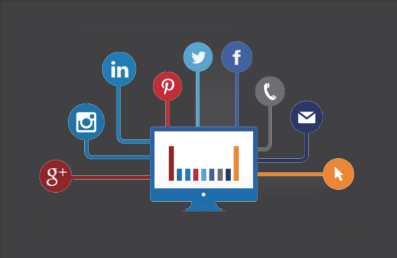
Contents
- UTM Attribution
- Custom Marketing Attribution Parameters
- Reference Attribution Data
3a. In a bot
3b. Pass it to CRM via webhooks
Now you can use Instabot to attribute anonymous visitors on your site to specific marketing, campaigns, advertisements, and e-mails via UTM attribution and custom marketing parameter attribution
By passing attribution data that already exists in your marketing clickthrough links into Instabot, you can focus your marketing time and dollars towards the campaign sources that actually yielded valuable leads for you through Instabot!

This Instabot session yielded a valuable lead that came from the "facebook-spring2018" campaign!
1. UTM Attribution
Instabot automatically captures all UTM attribution parameters in your digital ad clickthrough URLs and store it in the user's profile when the user lands on your page and engages with a bot. No additional setup is required!
Let's use this link as an example landing page - https://www.instabot.io/?utm_source=instabotdocs&utm_medium=instabotdocumentation&utm_campaign=instabot-documentation&utm_term=instabotutmattribution&utm_content=marketingattributionpage
In this example landing page link, we are passing 5 UTM parameters in the landing page link:
utm_source= instabotdocsutm_medium= instabotdocumentationutm_campaign= instabot-documentationutm_term= instabotutmattributionutm_content= marketingattributionpage
If a user clicks on this link and engages with any bot on the site, all 5 UTM parameters will be automatically captured and stored to that user's profile.
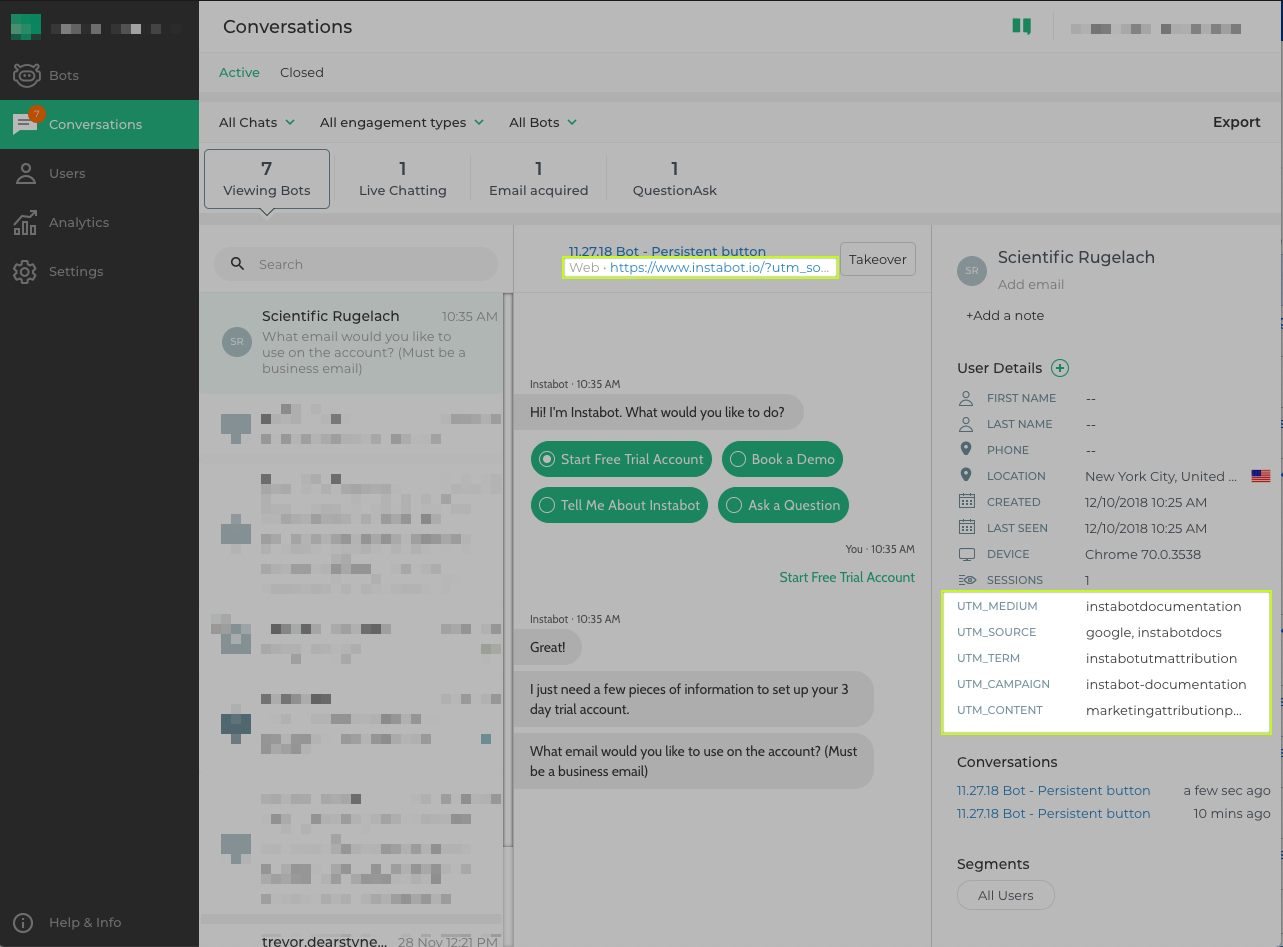
This marketing attribution will also work with microsite URLs - eg: https://microsite.instabot.io/p1yiW?utm_source=instabotdocs&utm_medium=instabotdocumentation&utm_campaign=instabot-documentation&utm_term=instabotutmattribution&utm_content=marketingattributionpage
2. Custom Marketing Attribution Parameters
Instabot also allows you to capture custom marketing attribution parameters (non UTM) in your clickthrough links.
For example, let's say you want to track and attribute "lead potential" and "company" in any bot engagement via clickthrough links in your email outreach marketing. You'll need to do two things:
Create a custom user-property
- Open the user-property management page, and create a new property
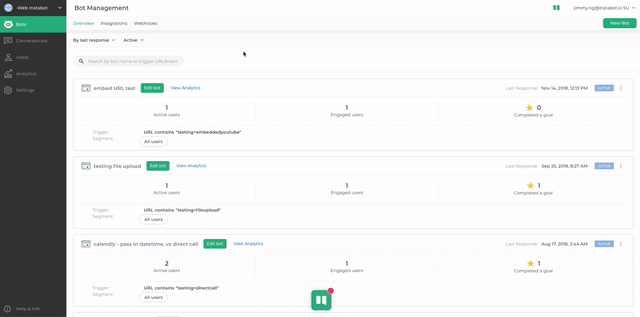
Create a new user-property
- Add your new user-property as follows:
- "name" = name of your custom marketing attribution parameter
- "description" (optional) = a brief description so your team knows what this parameter indicates
- "format" = Free Text"
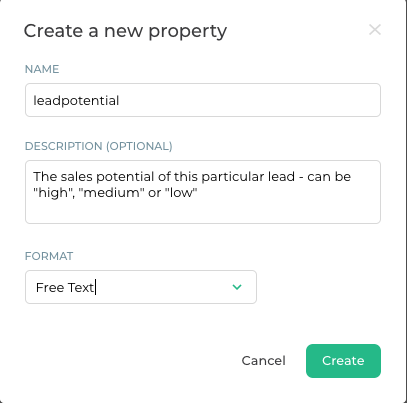
- Repeat steps #1 and #2 until you've added all your custom marketing attribution parameters. Now let's finalize our clickthrough link
Update your clickthrough link
The purpose of updating your clickthrough link is to tell Instabot which parameters in your landing page URL should be passed to us and attributed to this user.
- Prepend every custom marketing attribution parameter with
ib:- for example, if you are trackingleadpotentialandcompany- modify your clickthrough link as follows:
instabot.io?ib:leadpotential=high&ib:company=instabotdocumentation
- And you're done! Now, any URL parameter in your clickthrough link that are prepended with
ib:will be automatically tracked and attributed when that user engages with your bot!

Custom marketing attribution
Remember
Instabot will only automatically attribute URL parameters under the following conditions:
- It is a UTM parameter (eg: utm_source, utm_medium, utm_campaign, utm_term, utm_content)
- The URL parameter is prepended with
ib:
3. Reference attribution data
You can extend what we did in section 1 and section 2 to pass this attribution data directly into bot's content, or pass it to your CRM via webhooks!
a. In the bot
Let's assume you want to UTM_source directly into your conversation.
- In your bot, insert the UTM_source user-property
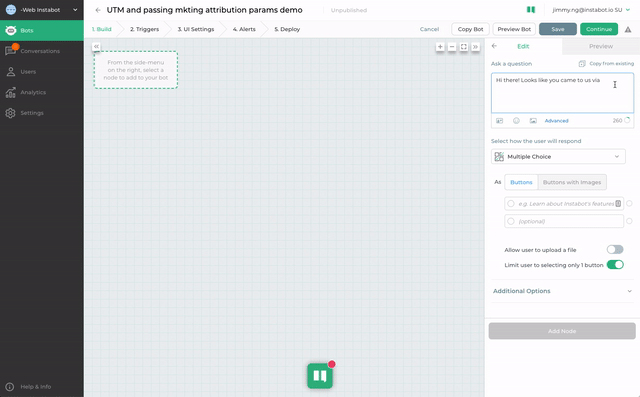
Display custom-properties in the conversation
- This is what the end-user will see when they engage with a bot
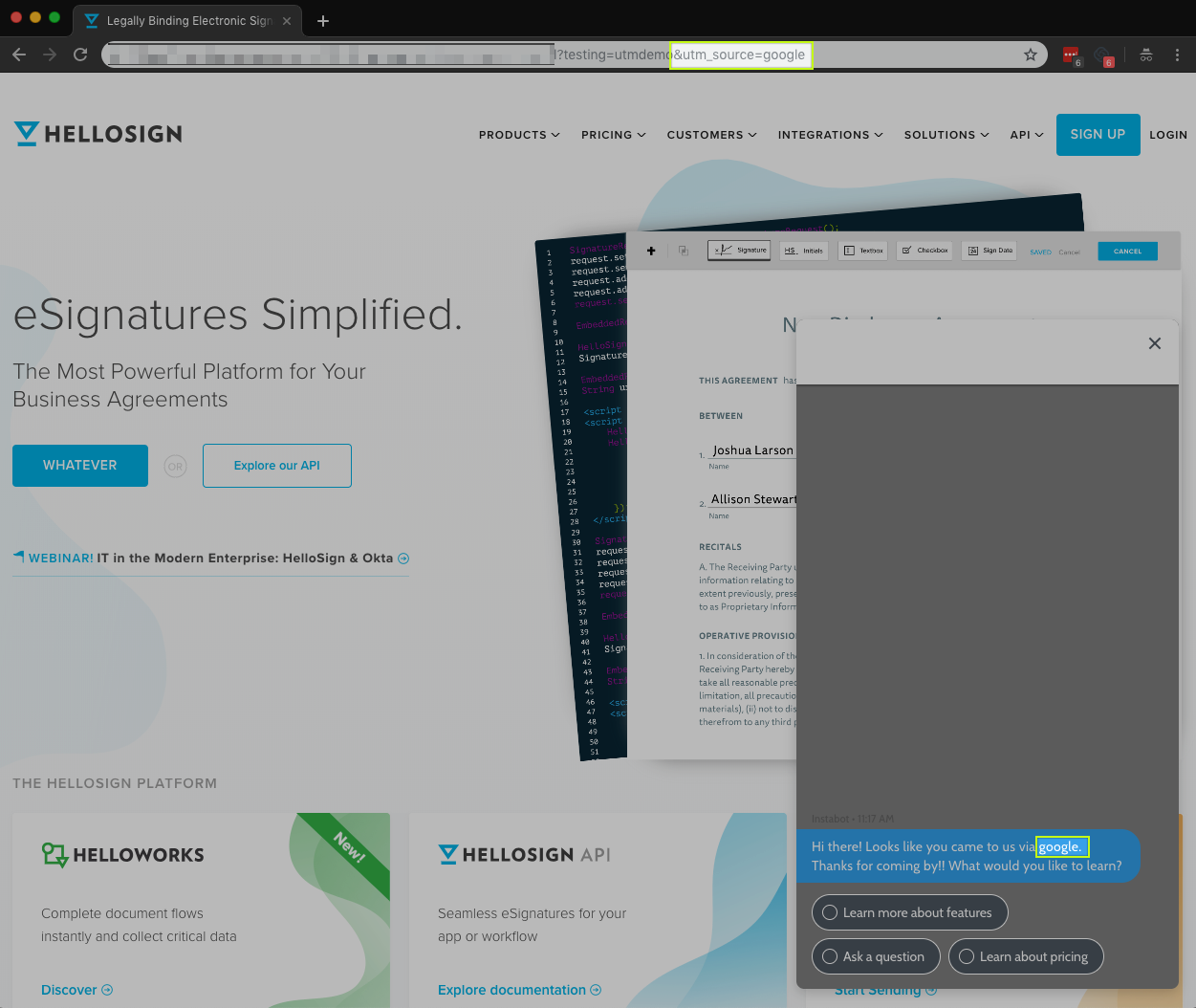
b. Pass it to a CRM or external system via webhooks
Any marketing attribution parameters you capture whether UTM parameters or custom parameters can be exported to your CRM or external systems via webhooks.
-
Configure your webhook to accept an input parameter for every attribution parameter you want to pass
-
Insert the attribution parameter as an input into your webhook
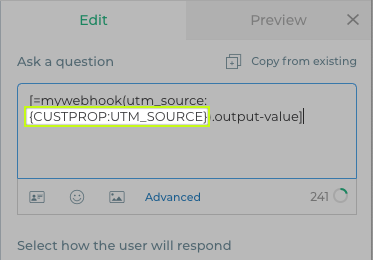
Updated about 2 years ago
